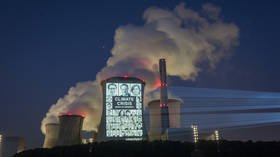Finland launches long-delayed nuclear plant

The Olkiluoto 3 nuclear reactor, located in western Finland, has finally been linked up to the national grid and started power generation, according to Finnish operator Teollisuuden Voima (TVO).
The 1.6-gigawatt reactor, the launch of which was originally planned for 2009, is expected to boost the nation’s electricity independence as well as to help in achieving carbon neutrality targets.
“OL3 significantly improves Finland’s electricity self-sufficiency and helps in achieving carbon neutrality goals,” the operator said in a statement on Saturday.
Eroded by technological problems that became the subject of lawsuits, Olkiluoto 3 is Finland’s first new nuclear plant in more than four decades and the first one launched in Europe in nearly 15 years.
The reactor’s final price tag was put at about €11 billion ($12 billion), almost three times more than what was initially estimated, Finnish public broadcaster YLE reported last year.
The reactor started test production at just over 0.1 gigawatt, and is projected to ramp-up to peak capacity by the end of July. After reaching full capacity, it will reportedly satisfy 14% of Finland’s electricity demand. Olkiluoto 3 is expected to reduce the need for imports from Russia, Sweden and Norway.
Finland now operates five nuclear reactors at two power plants on the shores of the Baltic Sea. All together, they are able to cover over 40% of the country’s electricity demand.













